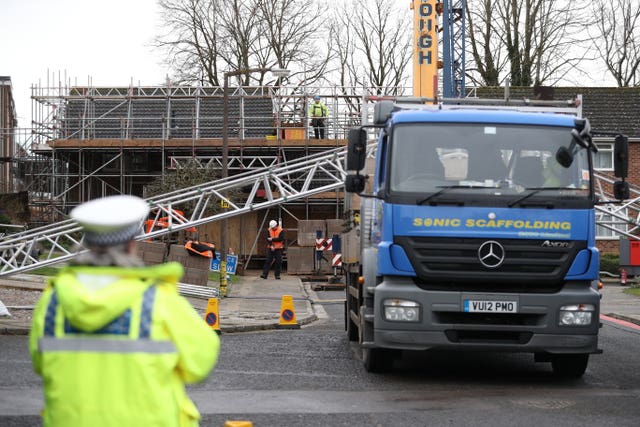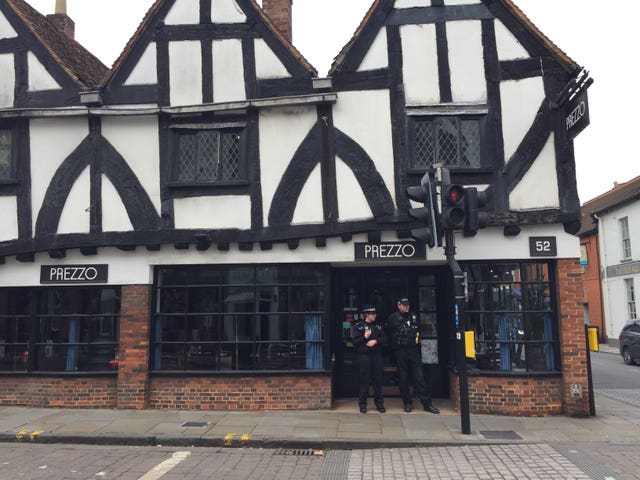
Police have repeated pleas for information over the Novichok poisoning as Salisbury was declared decontaminated of the nerve agent.
Former Russian spy Sergei Skripal ‘s house and 11 other potentially infected sites were ruled safe on Friday after an almost year-long clean-up.
Military teams have spent 13,000 hours on the clean-up after Mr Skripal and his daughter Yulia were targeted with the nerve agent on March 4 2018 and left seriously ill.
They took 5,000 test samples from across Salisbury and nearby Amesbury, where Dawn Sturgess, 44, was fatally poisoned in July, during the 355-day operation.
Wiltshire Police Deputy Chief Constable Paul Mills said: “Whilst today marks an important landmark in relation to the decontamination process it does not however mark the end to the police investigation.”

Some 250 detectives have worked on the investigation, collecting 11,000 hours of CCTV footage, seizing 3,700 exhibits and taking 1,702 statements.
Police are asking anyone who may have seen a counterfeit pink Nina Ricci perfume box or glass bottle in between the two incidents to come forward.
Counter Terrorism Policing senior national co-ordinator, Deputy Assistant Commissioner Dean Haydon, said officers were “determined to bring to justice” those responsible.
He said one year on there were still parts of the picture being pieced together, adding: “We cannot account for the whereabouts of the bottle, nozzle or box between the attack on the Skripals and Detective Sergeant (Nick) Bailey on 4 March and when Charlie Rowley said he found it on Wednesday, 27 June.”
The Skripals’ house, in Christie Miller Road, was handed from the Department for Environment, Food and Rural Affairs (Defra) back to Wiltshire Council on Friday.
Army Lieutenant General Ty Urch, who oversaw military involvement in the clean-up, said the announcement declared “all of those 12 sites safe”.
A Defra spokesman said: “The completion of clean-up work at Christie Miller Road, Salisbury marks a significant milestone in south Wiltshire’s return to normality following the sickening Novichok nerve agent attack last year.
“The property was declared safe following extensive cleaning and testing by specialist teams. Wiltshire Council will shortly begin to co-ordinate work to refurbish the property, with residents of Christie Miller Road consulted on its future use.”

Alistair Cunningham, chairman of the south Wiltshire recovery co-ordinating group, said this was a “significant moment” for the area which can now “look to the future”.
He added: “Work will begin shortly to reconstruct and refurbish the house so it can return to being a home again. We are continuing to talk to the residents on the future of the property as it is important their views are taken into account on how it is used in the future.
Environment minister Therese Coffey said the “professionalism” of all those involved in the clean-up had been “exemplary”.
Along with the house, the sites include the park bench where the Skripals were found collapsed, the Zizzi restaurant where they had dined beforehand, and the home of Detective Sergeant Nick Bailey, who was exposed to the agent.
Lt Gen Urch, commander home command and standing joint commander, said it had been “the longest running” operation of its kind on British soil.
He said: “Novichok is probably one of the most dangerous and most challenging chemicals in existence today and you don’t need very much of it and it’s highly spreadable.”
An estimated 600-800 specially trained military personnel, including the chemical, biological, radiological and nuclear regiment, were involved in the clean-up, named Operation Morlop.
About 190 worked at any one time and there were 250 “deliberate operations” to cross into and decontaminate danger areas.

A senior military source said the Skripal house was the “most complex” but each decontamination effort was “bespoke” to the site.
Other sites were Salisbury and Amesbury ambulance stations, Bourne Hill police station, Ashley Wood vehicle recovery yard and The Mill pub.
Ms Sturgess fell ill and died after coming into contact with a perfume bottle believed to have been used in the attack on the Skripals and then discarded.
Her partner Charlie Rowley, 45, was also exposed to the nerve agent but was treated and discharged.
Mr Rowley’s home, a Boots pharmacy branch and Amesbury Baptist Church were also among the 12 sites.
In January, the roof of the Skripals’ house and garage were dismantled then removed and disposed of.
The roof was removed because the extent of the search “potentially spread the agent into every nook and cranny”, the source said.
Lt Gen Urch said ambulances used in the initial response also had to be decontaminated during the “slow, deliberate and detailed operation”.
Special dressing zones were set up near the Novichok “hotspots” where teams changed into special respirator suits which included equipment not normally used by the military, the general said.
“I think our military personnel have demonstrated genuine courage,” he said.
“This is something which young girls and boys crossing the hot zone have never done before in their lives and it’s been an amazing demonstration of physical and mental courage.”
He said the attack, believed to have been orchestrated by Russia’s secret service, was a “despicable act”, repeating a comment made by the Prime Minister Theresa May in the aftermath.
Teams involved in the clean-up will be “recognised in due course for their courage”, Lt Gen Urch added.


Comments: Our rules
We want our comments to be a lively and valuable part of our community - a place where readers can debate and engage with the most important local issues. The ability to comment on our stories is a privilege, not a right, however, and that privilege may be withdrawn if it is abused or misused.
Please report any comments that break our rules.
Read the rules hereLast Updated:
Report this comment Cancel